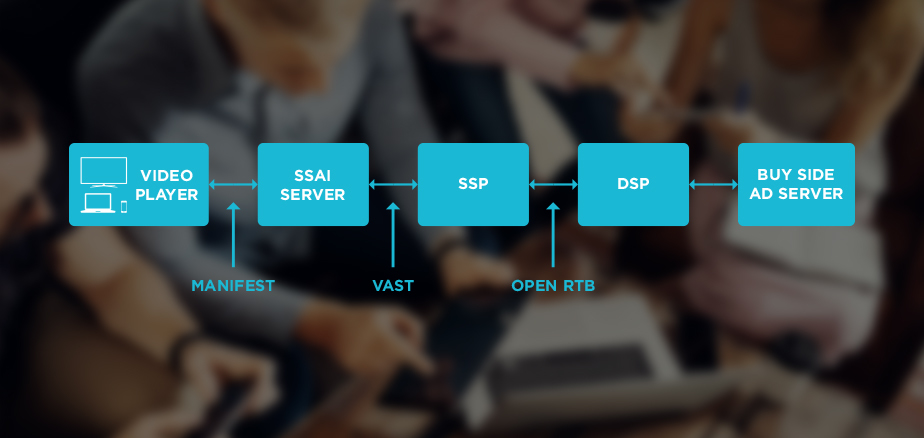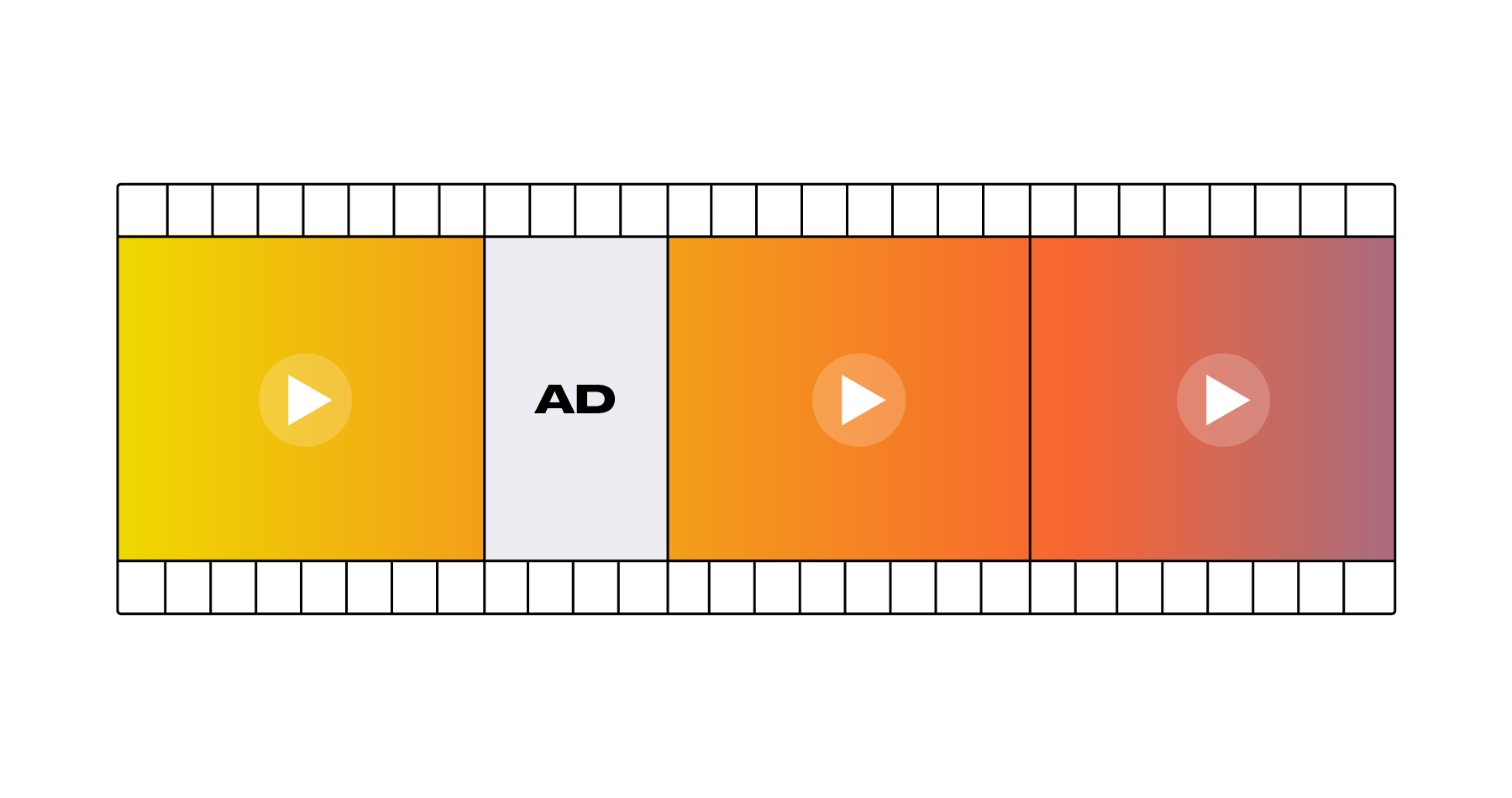How Programmatic & Server Side Work Together in Live and VOD
Media

High-quality, long-form content continues to shift from being consumed via traditional MVPDs and their set top boxes to a range of “connected living room” devices that deliver video over IP. This shift is creating lots of IP-enabled inventory which, while it looks like traditional TV, is often monetized differently. An example of data underlying this trend comes from MoffettNathanson who report that in Q3 ‘17, linear video services lost 872,000 subscribers while virtual MVPDs like SlingTV added 962,000 subscribers.
For a TV ad-buyer at a media buying firm, the targeting afforded by IP is exciting but the workflow and measurement conversation may be unfamiliar. A lot of this rapidly growing pool of inventory is being created using server-side ad insertion (SSAI) and the video ad tech ecosystem is under pressure to come together to make this opportunity valuable for the networks, distributors, and buyers who increasingly want to transact programmatically.
Last week, VideoNuze hosted its annual SHIFT Summitwhere the main focus was programmatic video. At this year’s show, the IAB, SpotX, and Brightcove collaborated on a presentation to address how the ecosystem is progressing on taking advantage of this opportunity.
SSAI is a valuable way to for networks to achieve reach, monetization and an improved user experience. This was recapped briefly at SHIFT to familiarize anyone in the room who was unfamiliar with this concept.
Is a 35% Lift in Inventory Valuable If You Can’t Fill It?
One broadcaster that runs Brightcove SSAI, MediaWorks, was kind enough to share a case study about how it was able to see a 35% lift in available ad inventory. The broadcaster started reaching connected living room devices and older mobile devices with stitched streams. It started beating ad blockers on desktop web. Additionally, MediaWorks found that reducing the errors and buffering that comes with client-side ads, and delivering a seamless, ad-stitched stream, drove a 14% lift in time spent viewing per session.
Our goal, working with the IAB and the ad tech ecosystem, is to give customers the ability to monetize their video however they wish. If a broadcaster like MediaWorks relies on selling its inventory programmatically, whether in a PMP or leveraging a range of SSPs or exchanges - there may be some education and adjustments required to optimize fill rate and yield in an SSAI workflow.
The good news is that the buy side is excited about SSAI inventory because it’s overwhelmingly available on big screens via Roku/AppleTV/Xbox etc. and in premium content because the more mature broadcasters and service providers have been the early adopters. SpotX has done buyer surveys which returned data in support of this point.
Who Is Solving for What?
If the critical parties in an SSAI workflow are reflected by the diagram at the top of this blog post, the purpose of the IAB TechLab and of our presentation at SHIFT was to show how they are all starting to align to support the Mediaworkses of the world.
An example of where alignment is needed is the verification of inventory sources and video impressions that are coming from SSAI services. Brightcove SSAI has been whitelisted by programmatic technology companies like SpotX to ensure that inventory from our customers is recognized as valid for bidding. SpotX also is taking the step of explaining to DSPs and buy side ad serving companies that the beacons they will be getting, as ads are delivered, often come from the server rather than end devices and are following the required protocols of those buy side partners.
As Kevin Schaum, Senior Director, Advanced Solutions Group at SpotX says, “We’ve spent the past several months solving for the complexities of combining programmatic technology with server side ad insertion. We needed to make sure DSPs have the ability to buy and report on SSAI video inventory, so we’ve had a ton of communication with our DSP partners explaining how SSAI inventory will be sent to them in OpenRTB and the technical requirements for ingesting tracking events sent from SSAI servers.”
Kevin pointed out at SHIFT that DSPs are able to utilize device IDs, IP addresses, and geodata to target audiences across SSAI inventory. Any other targeting parameters that are needed to optimize bid prices (and fill rate) can be passed via key value pairs in the ad request, just as is the procedure in a client-side scenario.
The discussion at SHIFT also touched on the amount of live inventory that is coming online -- whether from a linear 24x7 scenario like SlingTV (a SpotX customer) or any number of live sports use cases that Brightcove has been powering. SSAI+SSP workflows support things like podding, competitive separation, and other requirements of linear. With live sports, there is a concern around scale and the step of either conditioning DSP bidders for a massive influx of requests when 500k concurrent viewers hit the 2 minute warning of an NFL playoff game -- or finding a way to stagger requests going into an anticipated break. SpotX is also coordinated with the demand side about ways to avoid overspend with many simultaneous requests and preserve their frequency capping targets.
Next Steps
Another area of problem solving falls in the realm of the IAB. For example, the promise of VAST 4.0 to accelerate progress further includes benefits like Universal Ad ID that help stitching services like Brightcove SSAI know that it has already seen and transcoded a piece of creative before somewhere in its system.
With VPAID not supported in SSAI, the importance of VAST 4.0’s ability to separate the video ad file from the sidecar of instructions for measurement and other player-side activities is also important. We’ve already seen the power of being able to deliver viewability metrics from providers like Moat and Integral Ad Science when that is a requirement in a desktop SSAI scenario.
The IAB Tech Lab is driving these conversations via the Digital Video Technical Working Group and the OTT Technical Working Group. Amit Shetty, senior director for video and audio products at the Tech Lab also joined the SHIFT presentation and seeks more industry participation to find “areas like Universal Ad ID and viewability that need more standardization”. Email Amit Shetty if you are interested in learning more.
The Future
For SSAI to be adopted, in all scenarios where content owners and distributors want to use it, the ecosystem needs to be aligned.
- The buy side needs to get what they want in terms of targeting capabilities and analytics.
- The sell side needs to be able to have high technical performance and high business performance. They need sufficient demand (interested buyers, buyers that can handle scale) and they need to be able to implement SSAI easily.
Brightcove’s position is that SSAI will be the right answer for a high percentage of premium inventory in the future. We counsel our customers to think of it like this (vs. client-side):
With the support of ecosystem pillars like SpotX and the IAB we’ll see a future where this combination of reach, targeting, and user experience delivers a big payoff. Listen to VideoNuze’s podcast recap of the themes from the SHIFT summit and stay tuned to the Brightcove blog for news of a webinar where this group will explore the SSAI+Programmatic opportunity in greater detail.




